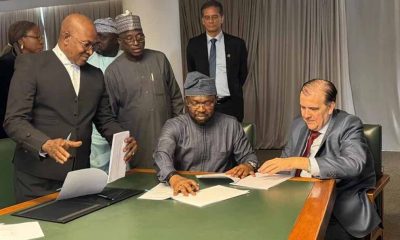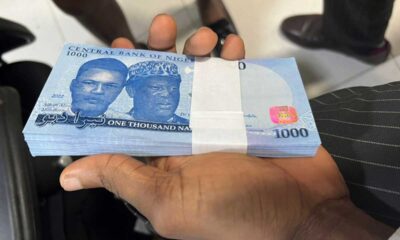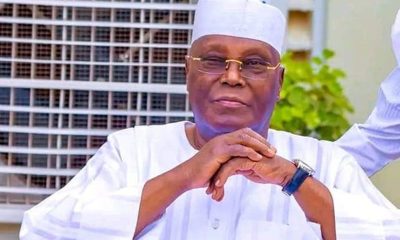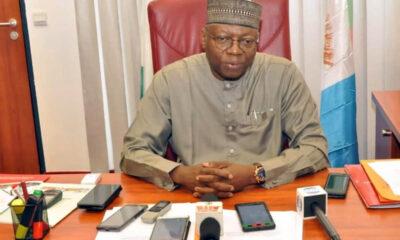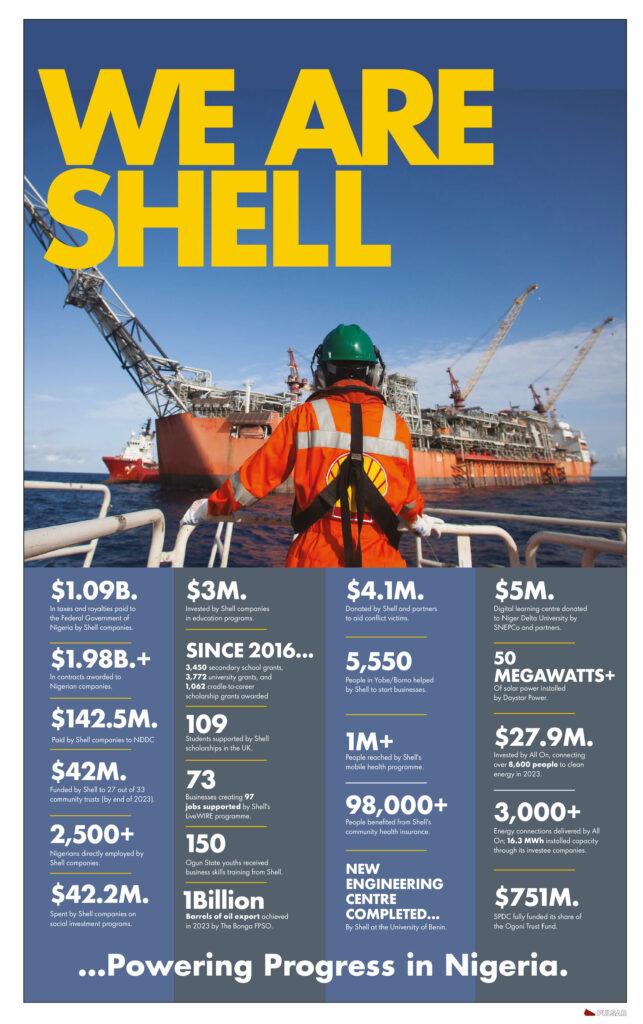Business
Nigeria relies on nine plants for 71% power

Findings have shown that just nine out of 26 power plants connected to the national grid are responsible for as high as 71 per cent of electricity generation in the country.
The plants are Egbin, Kainji, Azura-Edo IPP, Jebba, Delta, Shiroro, Odukpani, Afam VI and Geregu with a minimum share of 5.76 per cent each.
Statistics obtained from the Nigerian Electricity Regulatory Commission, NERC, on the latest report, ‘State of the Industry NERC Annual Report 2020’, revealed that over-reliance of the grid on the energy supplied by just nine power plants out of 26 might pose a risk to the industry.
This was because downtime in any of them might result in grid instability if there was no adequate reserved capacity from other plants to timely offset adverse impact of any sudden loss of generation from any of the 9 plants, NERC said.
According to the report, the nine power plants accounted for 71.80 per cent of the total electric energy generated in 2020.
Due to its size and availability, Egbin power plant accounted for the highest share,13.54 per cent of the total energy output, followed by Kainji hydropower plant which accounted for 8.31 per cent energy share. Azura Edo, Jebba, Shiroro and Delta were also among the top-six contributors to generate output during 2020.
READ ALSO:
- Lawmakers Knock TCN over Inability to Explain Power Generation, Summon MD
- Buhari, AGF, Others Dragged to Court over Alleged Unlawful Interference in NDDC
- Police, hunters rescue 14 abducted passengers in Osun
During the same period, Gbarain power plant accounted for the least share of output contributing 0.24 per cent.
Compared to 2019, the reliance on the aforementioned nine power plants increased by 4.54 percentage points as they only accounted for 67.26 per cent of total generation in 2019.
The NERC said it had commenced the process of gradually activating the industry contracts to provide certainty to the minimum volume of energy expected of each generating plant and properly allocate risks among the industry operators.
This, the Commission said, was expected to lead to incremental growth in power availability and utilisation.
During the year 2020, the available generation capacity of the 26 active plants stood at 6,107MW while the average generation was 4,054MWh, about 5.97 per cent higher than the generation level in 2019.
The industry recorded the highest daily peak generation of 5,520MWh on 30th October 2020.
Nigeria currently generates just a little over 4000MW despite promise to hit at least 5000MW from July 1..
Experts say the country needs at least 30, 000MW to reach sufficiency.
The NERC said complete resolutions of the technical and operational challenges in the Nigerian Electricity Supply Industry, NESI, remained a top priority.
“We are currently working to ensure that the Payment Assurance Facility for ensuring that GenCos honour their obligation to gas suppliers comes to an end. The Commission is finalising an Escrow Arrangement for the industry that will provide payment security for GenCos and gas suppliers pending full activation of contract obligations,” it said.
The average load factor across all plants stood at 61.74 per cent in 2020, indicating that an average power plant operating in the year 2020 had 61.74 per cent of its available capacity dispatched by the System Operator, SO. This represents a slight increase of 1.06 percentage points from the 60.68 per cent recorded in 2019.
Kanji, Jebba and Shiroro hydro plants, respectively, had 83.60 per cent, 78.73 per cent and 67.59 per cent of their available capacities dispatched by the SO and were respectively first, third and eight plants with the highest dispatch rates.
Thus, NERC said the dispatch rates of the three hydro plants complied with its Order NERC/182/2019, declaring hydropower plants as “must-run” by SO.
READ ALSO:
- No work, no-pay rule: NLC backs ASUU on salary arrears
- IGP, Police Service Commission In Fresh Disagreement Over Recruitment
- 2023: Atiku, Shettima, Obi Proffer Solutions To Nigeria’s Challenges
The Order was to ensure that hydro plants were efficiently dispatched, given their low tariffs and in consideration of safety associated with spilling of water from dams during the rainy season.
In 2020, Azura power plant had a load factor of 79.74 per cent while Sapele NIPP had the least dispatch rate of 33.71 per cent.
A report by The PUNCH in July had chronicled the drop in the combined generation capacity of the country’s 26 power plants by 70 per cent.
Data had revealed that capacity of the plants dropped from a total of 13, 461MW to 4,022MW as of when they were last tested in July 2021.
Spokesperson for the GenCos, Joy Ogaji, declined comments on the perennial low power generation by the firms.
Metering Expert, Sesan Okunade, told The PUNCH that power generation was not what Nigeria should be battling to solve at the moment.
“We have generated more than this before that have been sold to neighboring countries. The reason for system collapse is the excess kilowatt not being collected by Discos due the technical and commercial loss.”
“Good connection policy and investment in transformers to replace the obsolete one will assist in what is being generated to be effectively received by Discos,” he added.
The National President, Electricity Consumers Association of Nigeria, Barr. Chijioke James, said Nigerian consumers were told years ago that the generation capacity was over 6000MW.
“We are therefore surprised that in 2022 NERC is promising delivery of 5000MW by July 1st.
This does not give consumers confidence that the current situation will change for the better soonest,” he said.
Experts have called on the government to fully embrace other sources of energy to include renewables.
Executive Director of a solar-based company, Gennex Technologies, Toyin Ilo, said it was high time the Federal Government gave full support to the solar industry to thrive.
Business
Tron Founder joins Trump-backed crypto project, invests $30m

Tron Founder joins Trump-backed crypto project, invests $30m
Justin Sun, the founder of the Tron Blockchain has joined the World Liberty Financial project as an advisor after investing $30 million into the project.
The World Liberty Financial project is backed by the Donald Trump family and aims to become a leading crypto project in the global crypto space.
Justin Sun joined the project as an advisor after purchasing $30 million worth of WLFI tokens making him the largest shareholder in the project.
The development was announced via the official X page of the World Liberty Financial project welcoming the Crypto founder to the project.
“Exciting Announcement!
We’re honored to welcome @justinsuntron as an advisor to World Liberty Financial (WLFI)! Justin is the founder of @TRONDAO an advisor to @HTX_Global, and a supporter of @BitTorrent
. A graduate of the University of Pennsylvania, he recently won Sotheby’s auction for the iconic banana artwork.
#TRON is among the world’s top 10 cryptocurrencies and one of the largest public blockchains. Justin’s insights and experience will be instrumental as we continue to innovate and grow. Welcome to the team, Justin!” WLFI tweeted
READ ALSO:
- Drama as Yahaya Bello calms supporters after judge storms out of court over rowdiness
- NAF destroys terrorists’ gun truck, neutralizes over 20 fighters, repels attack on troops
- They want to cancel my show in Nigeria over economy comment – Davido
Justin Sun’s $30 million investment in the project boosted the sales traffic of its native token raising it from $21 million to $53 million.
The increased inflow of capital into the project better positions the project to achieve its goals which include a stablecoin-focused credit card and infrastructure enhancement.
Justin Sun brings onboard his wealth of experience as the founder of one of the Top 10 blockchains in the industry by market cap and his advisory role at HTX and BitTorrent.
Sun’s previous track record of bold investments and innovation is expected to be a huge boost to the WLFI project.
The WLFI gig is another feather to the hat of Justin Sun as he expands his activities in the crypto space. The Tron founder recently purchased a 6.3 million NFT art in a bid to revive a stagnant sector.
The World Liberty Financial project is backed by Donald Trump’s family and it looks to promote the mass adoption of Defi and stablecoins. This project aligns with the Donald Trump pro-crypto mantra and has all the credibility a project of that status needs.
Tron Founder joins Trump-backed crypto project, invests $30m
Auto
Toyota By CFAO showcases latest Land Cruiser Prado, others at P’Harcourt Open Day

Toyota By CFAO showcases latest Land Cruiser Prado, others at P’Harcourt Open Day
Toyota By CFAO, the authorized distributor of Toyota vehicles in Nigeria, has commenced a three-day special display of the latest new Toyota models from the company at an Open Day organised in Port Harcourt, Rivers State, for residents of the city and its surrounding areas.
The Toyota By CFAO Open Day holds from Tuesday, November 26 to Thursday, November 28, 2024, according to a statement by the company.
The event running from 9am to 5pm each day is taking place at the auto company’s showroom located at 184B, Trans-Amadi Industrial Layout, Port Harcourt.
It discloses that the exciting event will feature the highly anticipated 2024 Toyota Land Cruiser Prado, one of Toyota’s flagship models, alongside a range of other exceptional vehicles tailored for the Nigerian market.
This, it notes, is an exclusive opportunity for attendees to explore the latest in automotive excellence, discover new vehicle options, and benefit from Toyota By CFAO’s End of Year Bonanza.
General Manager of CFAO Mobility Port Harcourt, Julius Fasetire, encourages all residents to “come witness history in motion as we proudly unveil the All-New 2024 Toyota Land Cruiser Prado.

“Be among the first to explore this remarkable masterpiece and discover our full range of Toyota vehicles. Don’t miss out on the chance to experience automotive excellence and enjoy a free diagnostic check for your Toyota vehicle!”
The 2024 Toyota Land Cruiser Prado has already generated excitement across the country, following its recent unveilings in Lagos and Abuja.
The product is quickly becoming one of the most sought-after sports utility vehicles in Nigeria, appealing to both corporate and individual buyers.
With over 11.3 million units sold globally in more than 170 countries, the Land Cruiser Prado is renowned for its rugged off-road capabilities and comfort for everyday driving.
The firm says this year’s model comes in two distinctive editions – the Limited Edition (First Edition) and the Adventure Edition – both equipped with a 2.4L turbocharged gasoline engine and an 8-speed automatic transmission, ensuring superior performance both on and off the road.
Toyota By CFAO also says it ensures that genuine parts and a comprehensive 3-year/100,000 kilometre warranty are available for all customers.
In addition to the Land Cruiser Prado, the event will showcase a variety of other popular Toyota models including the Belta, Rumion, RAV4, Camry, and Hiace.
The Open Day, it stresses, promises to be a must-attend event for anyone interested in exploring the world of Toyota vehicles, from luxury to practicality, and experiencing firsthand the future of automotive technology.

The company says more details about the rich offering of Toyota in the Nigeria market can be obtained from https://www.toyotabycfao.ng/.
Business
Nigeria’s foreign reserves in marginal increase, now $40.88bn
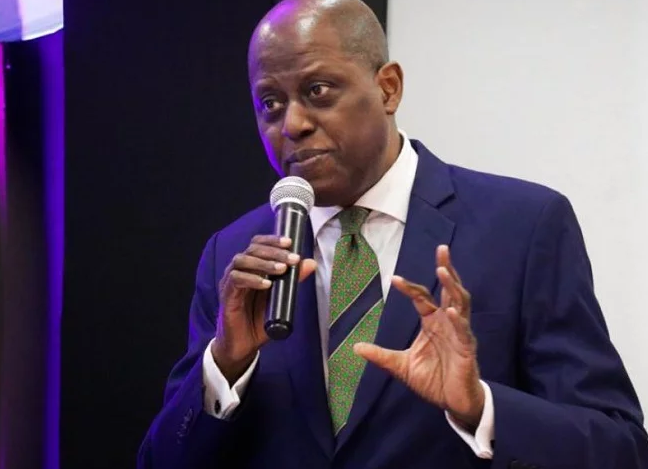
Nigeria’s foreign reserves in marginal increase, now $40.88bn
Nigeria’s foreign reserves rose to $40.88 billion as of November 21, the Governor of the Central Bank of Nigeria (CBN), Olayemi Cardoso, has said.
Cardoso disclosed this on Tuesday at a press conference after the Monetary Policy Committee’s 298th meeting in Abuja.
He said the external reserves grew from $40.06 billion at the end of October to $40.88 billion in November.
The amount represents an increase of $82 million or 2.05 per cent in 21 days.
“The external reserves rose marginally to 40.88 billion as of 21 November 2024, from 40.06 billion at the end of October 2024, available to finance 17 months of imports,” he said.
However, from the apex bank’s website, the increase in Nigeria’s foreign reserves showed $40.27 billion on November 22.
Cardoso also said, “The process of getting us where we are in terms of reserves has been a long one”.
“It is a clear indication that the policies we have put in place are certainly yielding fruits,” he added.
“However, and it’s very important to make a distinction here and to reiterate the fact that reserves are there for a multiplicity of different purposes, not least of which is to create buffers in the event of unanticipated shocks.
“So they are not there to simply whittle away. They are there to be used to more or less defend yourself where that becomes necessary
“And when we talk about shocks that are not anticipated, I think we can see how the global economies are.”
Cardoso also said the bank would continue to intensify efforts to stabilise the currency and prices.
The CBN governor said, “The currency has been stable compared to what it was in June”.
But he said for the value of the country’s currency to be stable, there must be increased exports and diversification of the economy.
Cardoso said diaspora remittance had increased due to policies put in place.
He commended those in the diaspora for helping the country accomplish over $600 million in remittances.
-
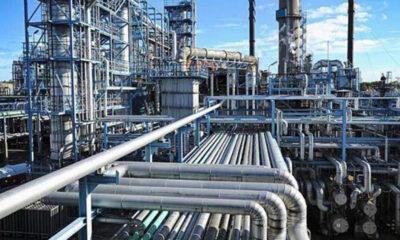
 metro1 day ago
metro1 day agoBREAKING: Port Harcourt refinery begins operation
-

 Sports1 day ago
Sports1 day agoFrench football star, Paul Pogba’s blackmail trial begin in Paris
-

 Politics2 days ago
Politics2 days agoLagos 2027: Seyi Tinubu campaign team releases his life documentary
-

 Entertainment2 days ago
Entertainment2 days agoPolygamy best form of marriage for Africa – Okey Bakassi
-

 metro2 days ago
metro2 days ago40-foot container falls on car in Lagos
-

 International2 days ago
International2 days agoTrump to sack 15,000 transgender officers from U.S. military: Report
-

 Education1 day ago
Education1 day agoUS University opens 2025 scholarships for international students
-
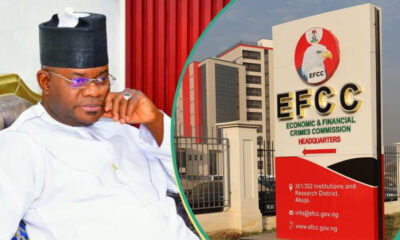
 News1 day ago
News1 day agoYahaya Bello reports to EFCC office with lawyers

